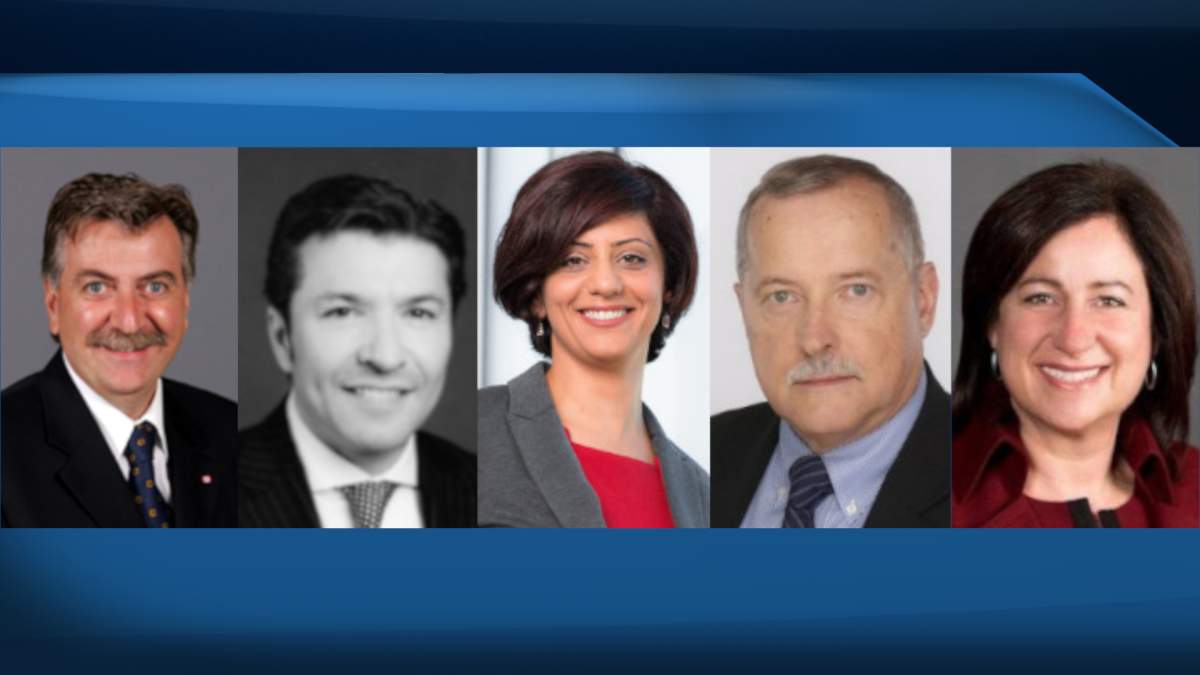Ontario has released recommendations made in March by the Hamilton Transportation Task Force on how $1 billion of the province’s money can be spent on transit projects in the city.

The task force — formed in early January, just a month after the province’s cancellation of the city’s 17-stop LRT — was originally given a February deadline but asked for an extension to March 16 to come up with a preliminary list of new projects.
In a release from the Ministry of Transportation (MTO) on Thursday, the province said they were presented with an “intra-city higher-order transit project” which likely encompasses either a Light Rail Transit (LRT) system running east and west or Bus Rapid Transit (BRT) system that would run east and west in addition to routes north and south through the city.
The province said the LRT option could include part of the original plan for the now-defunct LRT if “additional capital funding is identified.” The task force is recommending the province “engage” other levels of government to fund such an LRT project.
A truncated version of the LRT is presented in the release as a first phase, provided the benefits meet or exceed the benefits of the original project, according to the task force.
They also suggest to the MTO that a shorter rail system should have expansion capabilities for the future.
Meanwhile, the BRT suggestion consists of a 13.5 kilometre “B-line” bus service fully-separated by a median with level boarding. That line would run on the same route as the original LRT plan, from McMaster to Eastgate stations via Downtown Hamilton.

The “A-line” BRT would have it’s own similar 8 kilometre separated median and would run from Hamilton Waterfront/West Harbour GO Station to Rymal Road via James Street.
In its pitch for the BRT, the task force acknowledged that any plan which mixes the lines with regular road traffic will not deliver “benefits to the people and businesses of Hamilton.”

Get daily National news
The group is recommending the province and Metrolinx consider both projects equally and undertake further analysis to determine which is the best fit for Hamilton’s transportation needs.
Should transportation minister Caroline Mulroney and the ministry find either of the two projects not feasible, the task force is recommending transit in the form of 15-minute two-way all-day GO rail service to Hamilton GO Centre station, as an alternative.
That plan would include an extension of GO service from Aldershot to Hamilton GO Centre Station building a new rail in the provincial highway corridor at an estimated cost of $400 million to $1 billion.
The recommendations come from a panel of five people with varying backgrounds appointed by Queens park in early 2020.
The move came after the ministry cancelled the province’s $1-billion commitment to Hamilton’s LRT, saying capital and operating cost estimates for the 14-kilometre rapid transit line from McMaster University to Eastgate Square soared as high as $5.5 billion.
The task force included former federal transport minister Tony Valeri and Hamilton city manager Janette Smith.
Hamilton Mayor Fred Eisenberger, who says he’s never been a fan of the task force idea, told Global News after the release of the recommendations he believes the group identified the LRT project as it’s best recommendation.
“My interpretation is LRT is one-a, and BRT is one-b,” Eisenberger said.
“If you dig into the recommendations, it really points to LRT as being the most logical option to get shovel ready potentially with a different funding model.”
The mayor went on to say he didn’t get the idea of the all-day GO rail service as the third option, calling it a “goofy” notion.
“I thought that shouldn’t have been there in the first place, it’s kind of one-z in my opinion.”
Eisenberger also told Global News he’s reached out to the federal government in recent months, particularly Minister of Infrastructure Catherine McKenna, who he says told him Ottawa was open to potential overtures from the province to help finance a major Hamilton transit project.
However, Eisenberger says the Ministry of Transportation’s response to such a move was considered “premature” in light of the transportation task force still examining potential projects.
“The Hamilton task force has considered all options on the table. Any nomination for project funding to the federal government would be premature without the receipt of the task force’s recommendations,” ministry of transportation spokesperson Christina Salituro told Global News in March.

Eisenberger made the suggestion upon hearing about the province’s $28.5-billion request for Ottawa to fund new Toronto subway projects.
However, the mayor believes that a political sea of orange in the city and a lack of Conservative MPPs in office following the 2018 provincial election are the reasons the province has been putting Hamilton aside.





Comments